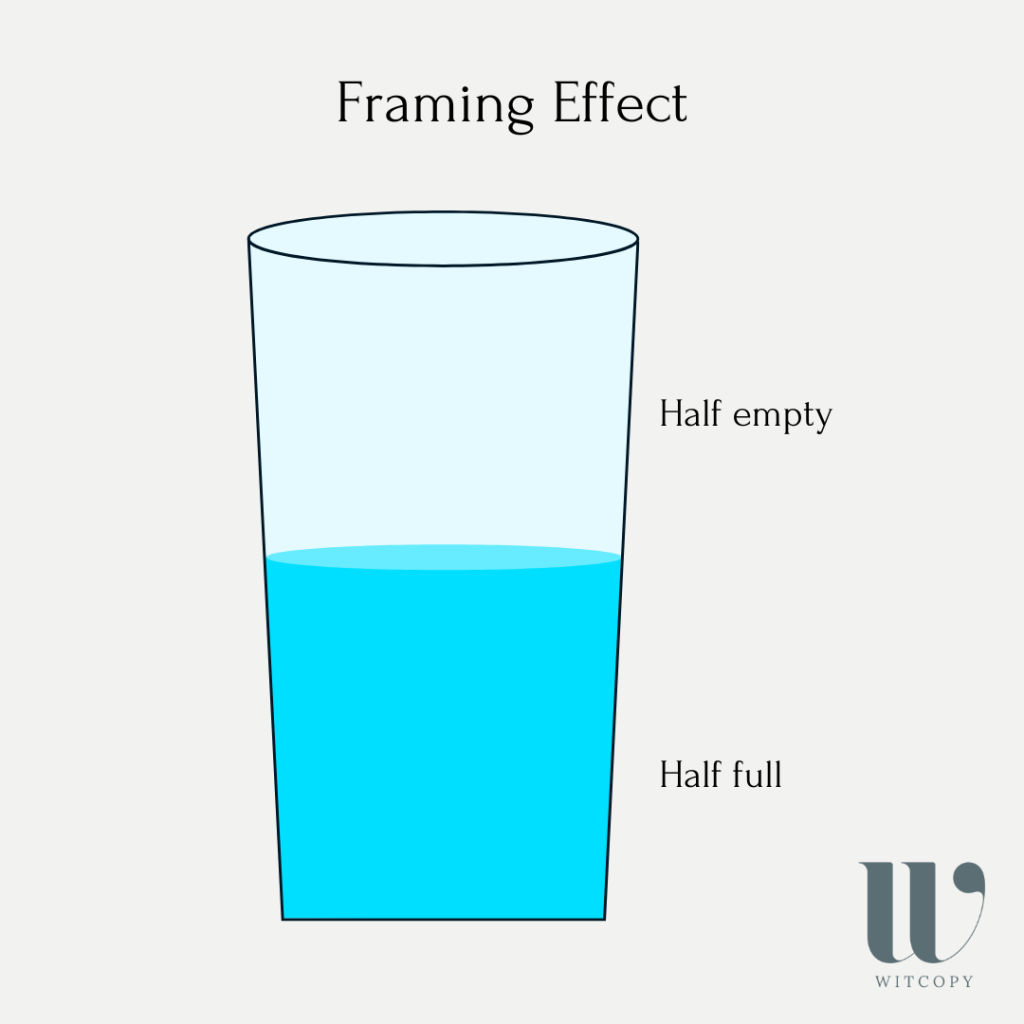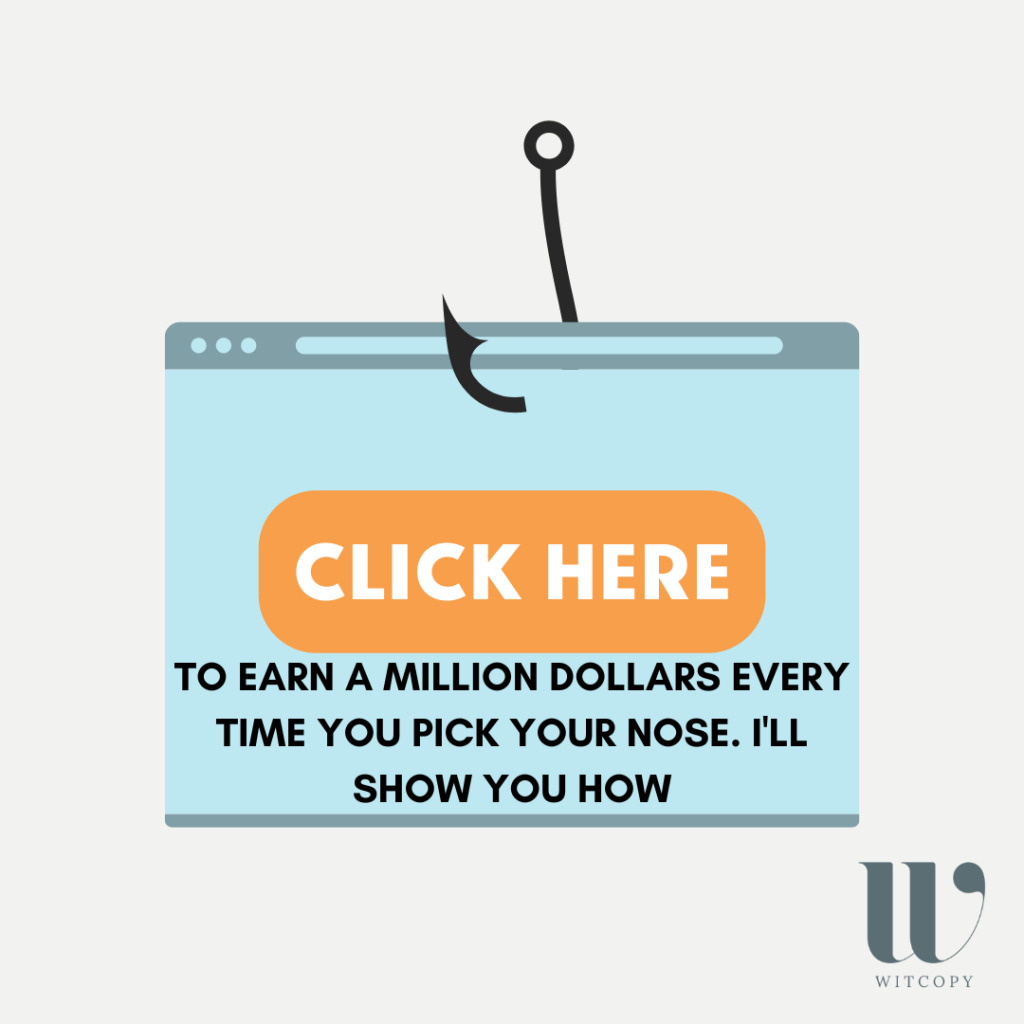Use the Power of Psychology: 3 Copywriting Persuasion Techniques
February 28, 2023
If you want to write more persuasively because you want to convert your audience into paying customers or clients, welcome!
The following copywriting persuasion techniques will help you do just that. And better yet, instead of telling you, “do this, not that,” I’m also explaining the reasoning behind these techniques, giving you examples of how to apply them and your next steps.
By the end of this, you should be able to go back to your copy and optimize it.
Leverage the Framing Effect
Has someone ever told you, “it’s not what you say; it’s how you say it”? That phrase is the perfect example of the framing effect, which is one of my favorite persuasion techniques because it works extremely well.
The framing effect is a psychological bias in which we get influenced by how information is presented to us.
Take, for example, the cup of water below.

If I were to say that the cup is half empty, I would subconsciously change how you see it and make you focus on the fact that something is missing – completely ignoring the other 50% you already have.
However, if I were to say the cup is half full, you’d be thrilled! You’d enjoy every sip and not feel disappointed towards the empty half of the cup.
Plus, if I were to market it to you, I’m sure you’d go for the half full, not the half empty even if they’re the same.
You’re probably wondering, “how can I utilize the framing effect?” Simple. You have two options.
- Focus on the positive gain: highlight what your audience will gain from your offer. If you’re a SaaS selling a project management software, you can write, “Create your account today. Get 8 hours of your week back.”
- Focus on the negative loss: highlight what your audience will lose if they don’t take you up on your offer, but ethically, because you’re not a slimy salesperson. If you’re an attorney for small businesses, you can write, “If you don’t have these contracts in place, your business could be at risk.”
Due to our natural fear of loss and missing out, we tend to engage more with negative loss than with positive gain, but you should test with both. Start by testing your sales page’s headline.
Cut the Clickbait
Clickbait is outdated, and your audience will smell it from a mile away. Research shows that people recognize clickbait as a manipulation tactic and will reduce your competence and trustworthiness. They’ll also be less likely to share your content, so goodbye word of mouth.

Yes, clickbait is attractive, but your brand won’t be if you resort to clickbait every time you want publicity or leads. Instead, be straightforward and realistic about the transformation your offer can deliver.
I see a lot of clickbait when it comes to subject lines, and if the email content is totally unrelated and I was misled, I unsubscribe immediately.
- If it’s going to save them time, tell them how many minutes, hours, or days they’ll save based on what’s proven.
- If it’s going to help them build a business, tell them the story of someone who did it, maybe your own story.
- If you’re selling anything, which you are, highlight what’s proven. You don’t need to exaggerate.
Present Fewer Options
This is one of the easiest and overlooked persuasion techniques.
Let’s pretend I’m selling you a pen. You can only pick one, and I have seven colors. What would you do? You’d probably be frustrated because you wouldn’t know which one to pick.
Another example, let’s pretend I’m selling you one of my copywriting services, a VIP Week, but instead of giving you one straightforward payment, I give you five payment plans to choose from.
You’d probably be so flustered that you’d question if you even need your copy project. Thinking, “if paying is so hard, I don’t even want to imagine the project itself.”
Studies show that when customers have more choices, they buy less. And once they finally make a decision, they are more likely to be dissatisfied because they don’t know if they made the right choice.

Try to stick to fewer than three options. Two is my sweet spot.
- Regarding your CTAs, the sweet number is one option, especially with emails and sales copy.
- When it comes to payment options, you can get away with two; monthly and yearly, or whatever payment options you offer.
- When it comes to you presenting your offers and allowing your prospects to choose the most fitting option for their needs, stick with two options.
Your Turn
Pay attention to how you frame your offers and make sure you are highlighting your benefits strategically. Are you going to be a half full or half empty person?
Be aware of accidentally creating clickbait-ey headlines and marketing assets. It’s as simple as being realistic.
Don’t go crazy with options, as more isn’t always merrier. The more options people have, the more confused and dissatisfied they become.